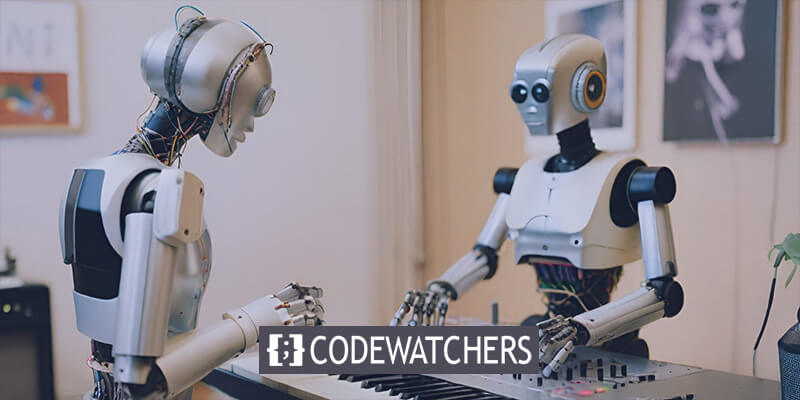Creating song covers with artificial intelligence (AI) has become increasingly popular, and in recent months, the process has become more accessible and cost-free.

In this tutorial, we'll explore the steps to create a unique rendition of Taylor Swift's "Shake It Off," performed by Bruce Dickinson, the iconic vocalist of Iron Maiden.
Although this example may add a humorous touch, the techniques discussed here can be applied to any song, catering to various goals, including the potential to go viral.
1. Isolating Vocals
One primary step in creating an AI-generated song cover involves isolating the vocals from the original track. For those without the track readily available, a quick search on Google for a YouTube to MP3 converter can provide the necessary file.
Create Amazing Websites
With the best free page builder Elementor
Start NowHowever, many songs may present challenges due to reverb or harmonies when attempting to switch the voice.

To counter such issues effectively, employing a tool like "Ultimate Vocal Remover" proves beneficial. This software offers a more in-depth process, ensuring consistent results across various songs. Moreover, it addresses reverb, harmonies, and other complexities, making it an optimal choice for a seamless transformation.
2. Utilizing Ultimate Vocal Remover
Upon downloading and launching Ultimate Vocal Remover, the interface allows for straightforward navigation. Users select the input song, define the output preferences (like file type), and apply specific processing methods like MDX-Net.

Optimal settings for the tool include selecting the model "Kim vocal2" to enhance the vocal extraction process.

3. Addressing Vocal Effects and Harmonies

While the initial extraction generally produces favorable results, tracks with heavy reverb or intricate vocal effects might require additional processing. This involves using different models within the software to manage reverb elimination ("VR architecture" and "DEcho DeReverb") and harmonies removal ("6 hp karaoke uvr").

4. Swap Voice with AI
Transitioning to the integration of a new voice involves using Google Colab.

This platform allows users to leverage pre-trained voice models for the desired artist or voice. Accessible through AI Hub Discord or a voice models spreadsheet, selecting the appropriate voice model is crucial for achieving the desired cover rendition.
5. Fine-tuning with Advanced Settings

Upon uploading the audio file and selecting the desired voice model, users can explore advanced settings to fine-tune aspects like pitch, effect preferences (e.g., "rmvpes," "mango crepe"), and specific adjustments for speaking voices ("Harvest"). However, default settings often suffice for optimal outcomes.
6. Merging Tracks and Enhancing the Cover
After converting the vocals to the desired voice, merging tracks can be done using various audio editing software, such as Audacity or Premiere. For instance, layering vocals and adding instrumental tracks, like a metal cover or additional elements from different sources, can further enhance the final cover rendition.
Crafting a Unique Music Video

Taking creativity a step further, integrating visuals with the cover can elevate the overall experience. Combining the AI-generated cover with relevant videos or imagery can create a compelling music video, providing a holistic multimedia experience.
Wrapping Up
In conclusion, leveraging AI technology enables enthusiasts to create unique song covers by transforming vocals and integrating new elements seamlessly by using Ultimate Vocal Remover & the help of Google Colab. Experimenting with various tools and techniques allows for endless possibilities in producing captivating music content.





